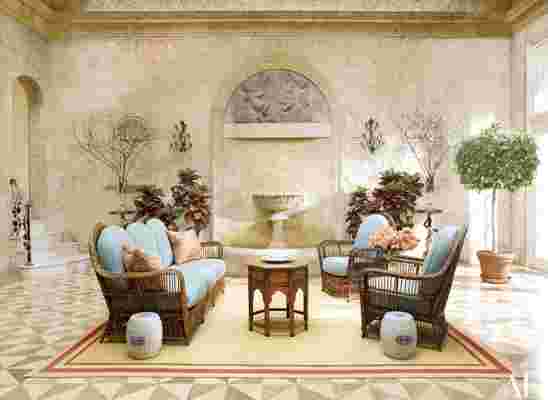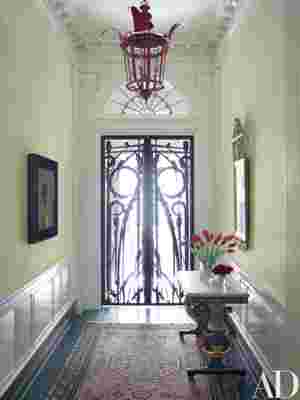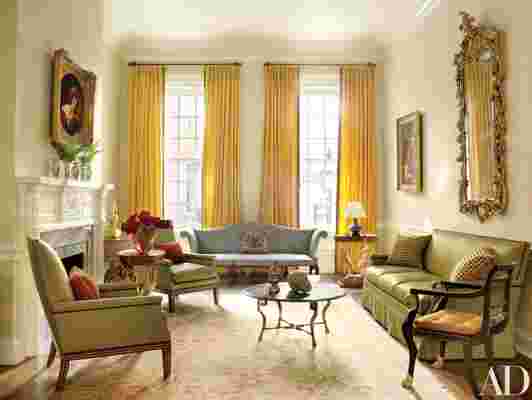A 19th-Century Townhouse in Philadelphia is Transformed Into a Refreshed Contemporary Residence
This article originally appeared in the July 2011 issue of Architectural Digest.
He wasn’t an urban dweller. At least that’s what the owner of this circa-1865 townhouse in Philadelphia’s Center City had always thought. Though he ventured downtown for his work as a commercial–real estate developer, home was two acres in the suburbs with a contemporary house he describes as “all glass and polish, and very precise.”
He and his wife built that house in the early 1970s, and over the next 30 years they raised three children there and filled its rooms with Continental antiques they collected in their travels. When his wife died in 2001, the children, grown and with families of their own, tried luring him into the city, but he was convinced that high-rise apartments were not for him and that townhouses were much too dark and narrow.
That is, until he saw a four-story, 11,000-square- foot Greek Revival house on what he considered to be the city’s best block. At 37 feet wide, it felt unusually spacious; light filtered in through nine-foot-tall parlor-floor windows and a stairwell skylight. And with six bedrooms, there would be plenty of space for his children and their families to visit. Still, the developer resisted. Although structurally intact, the interior was a shambles. “I was very nervous about it,” he says. “I asked myself, ‘Does this place just need a lot of care, or is it too far gone?’”
That’s when he called in New York City decorator and family friend Thomas Jayne , whom his late wife had met on a 1995 trip to Holland with the Furniture History Society. The property was too good to pass up, Jayne assured him, and they could most definitely restore its former glory. Jayne could not, however, predict how captivating—and ultimately how healing—the project would turn out to be for his new client.
To get their bearings, the men commissioned an architectural historian to trace the house’s past. A 1931 renovation by architect Herman Louis Duhring Jr. had given the residence its most dazzling feature: a solarium, with walls of Texas shell limestone, that connected the dwelling to a study built over the rear garden. A myriad of further accretions had also popped up in Duhring’s time, as decorator and client made careful note. (He added a mosaic-tiled taproom, for instance, and several elaborate bathrooms featuring pink marble and gold-plated fixtures.) If subsequent owners had done the house no favors, at least their changes were easily reversed. From 1949 until the mid-’70s, the building was loosely divided into four apartments and a doctor’s office. Another occupant, a colorful bon vivant, stitched the place back together and made it the setting for boisterous parties filled with famous guests—and even engineered a star turn for it in the 1983 movie Trading Places .



The current owner, though, had different priorities—ones centered on conservation, restoration, and minimally invasive updates. Jayne, a graduate of the decorative-arts program at Winterthur, proved an adroit accomplice. While his client masterminded moving the garden-level kitchen up to the parlor floor, to make space for a garage, and adding central air-conditioning and an elevator, Jayne sketched out the aesthetic next steps, which included painting the hall floors an aqueous blue-green to unify the space and installing a striped runner on the neoclassical central staircase. To replace the damaged floor of the solarium, Jayne chose gray-and-white Mexican stone and devised a geometric pattern that would pull the room together; his client puzzled out the math to make it fit.
Your comment